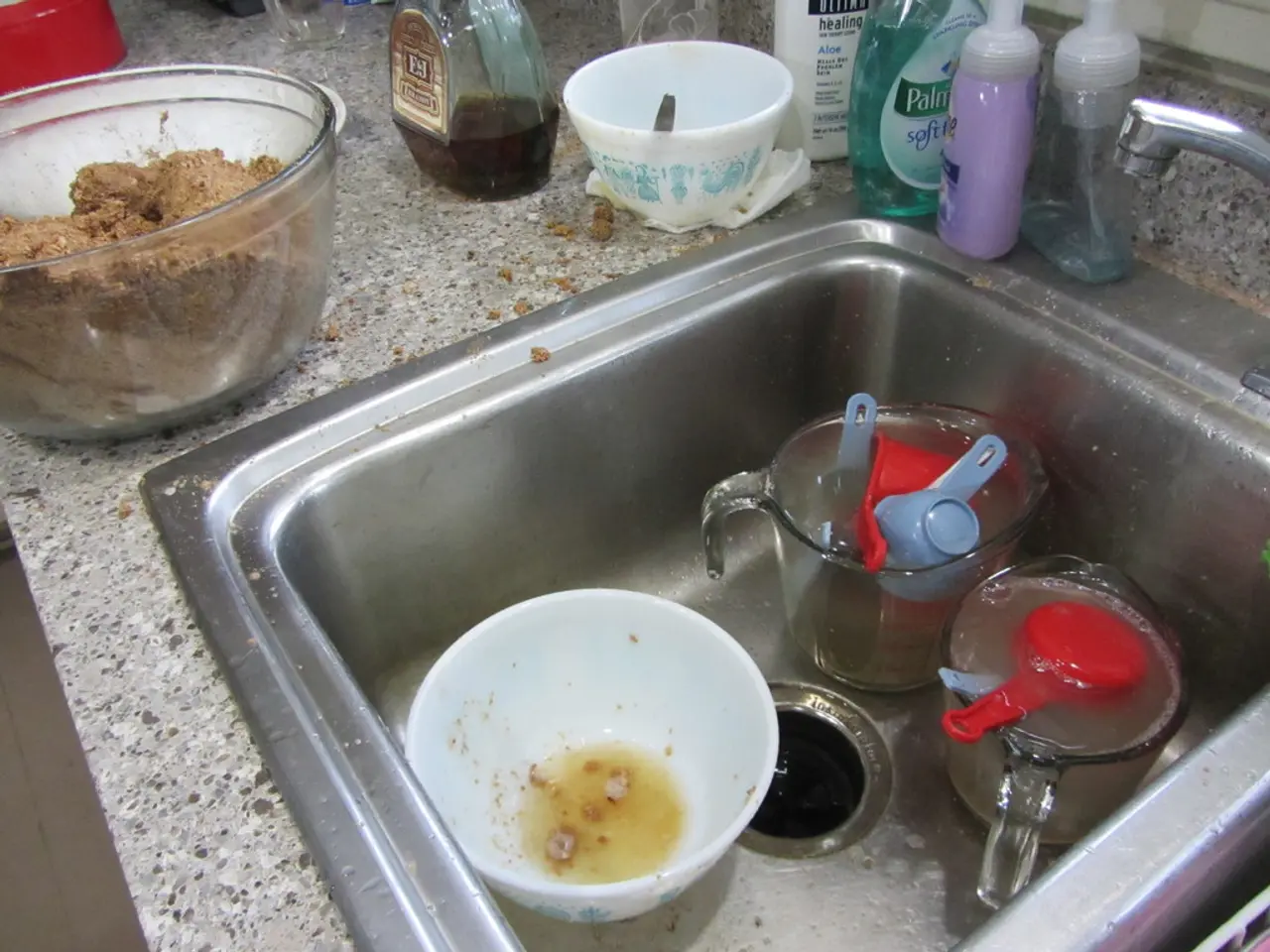- Pollutants in Swimming Spots
In the warmer months, the lakes of Saxony-Anhalt have become popular spots for recreation and relaxation. However, a growing concern is the presence of Vibrio bacteria, which can pose health risks to bathers, particularly those with open wounds or weakened immune systems.
Vibrio bacteria are not exclusive to Saxony-Anhalt's lakes. They can be found in various bodies of water, including other lakes and coastal areas, and are particularly active in environments with a salt content between 0.5 and 2.5 percent and temperatures above 20 degrees Celsius.
The Robert Koch Institute (RKI), a leading source of information on infectious diseases in Germany, states that Vibrio bacteria thrive in such conditions. These bacteria can cause a range of health issues, from skin and wound infections to gastrointestinal illnesses. In rare cases, they can lead to life-threatening blood infections, especially among immunocompromised individuals.
In recent months, Vibrio bacteria have been detected in the Strandbad Staßfurt and Naturbad Angersdorfer Teiche in Saxony-Anhalt, according to the state office. The presence of these bacteria does not necessarily mean that the entire water body is contaminated, but it does highlight the importance of water safety and public awareness.
Despite the risks, it's essential to note that the presence of Vibrio bacteria in bathing waters does not indicate poor water quality. The state office for consumer protection in Saxony-Anhalt is responsible for monitoring water quality and ensuring that bathing waters meet the required standards.
To minimise the risks associated with Vibrio bacteria, public awareness is key. Bathers should be educated about the risks, especially those who are vulnerable or have open wounds. Clear signage advising against swimming with open wounds or after heavy rainfall (which can wash contaminants into the water) is also important.
Healthcare providers should also be aware of the signs and symptoms of Vibriosis, as early recognition and treatment can help prevent complications. Long-term planning for more frequent and intense heatwaves affecting water bodies is also essential to ensure safe bathing environments.
In conclusion, Vibriosis is a growing concern in Saxony-Anhalt's lakes due to warmer climates and changing environmental conditions. Proactive monitoring, public education, and adaptive water management are essential to reduce risks and ensure safe bathing environments for all.
Community aid can be provided to promote awareness about Vibrio bacteria in bathing waters. Vocational training programs can be organized for water safety instructors to educate the public effectively.
Science plays a crucial role in understanding the behavior of Vibrio bacteria in different environments. Researchers are studying the impact of climate change on the distribution of Vibrio bacteria in various water bodies.
Industry collaboration is necessary for the development of advanced water filtration systems that can remove Vibrio bacteria from public bathing areas. Manufacturing companies can contribute to this effort by designing and producing efficient filtration systems.
Medical-conditions such as chronic diseases, cancer, respiratory conditions, digestive-health issues, eye-health problems, hearing impairments, and neurological disorders may increase the risk of complications from Vibriosis. Healthcare providers should be attentive to these conditions when diagnosing and treating patients with Vibriosis.
Health-and-wellness initiatives can encourage people to take proactive measures to protect themselves from Vibrio bacteria. This may include practicing good hygiene, avoiding consumption of raw or undercooked seafood, and seeking medical attention if symptoms of Vibriosis occur.
Fitness-and-exercise routines can boost the immune system, helping the body resist infections from Vibrio bacteria. Regular exercise can also improve overall health and wellbeing.
Autoimmune-disorders weaken the immune system, making individuals more susceptible to Vibriosis. Awareness about the implications of autoimmune disorders on Vibrio risks can help vulnerable individuals make informed decisions about their exposure to contaminated water.
Environmental-science research can help identify areas with high concentrations of Vibrio bacteria, enabling targeted interventions for water safety and public health.
Finance plays a role in funding research, development, and implementation of solutions for addressing Vibrio bacterial infections in water bodies. Investing in these initiatives supports the health and wellbeing of communities and the environment.
Energy-efficient solutions can help cool water bodies, reducing the growth and activity of Vibrio bacteria. Climate-change mitigation efforts can help preserve water quality and maintain safe bathing environments.
Dermatological services can address skin-conditions caused by Vibrio bacteria, such as skin rashes or infections. Skin-care products can also provide an additional layer of protection against Vibrio bacteria.
Health practitioners should be knowledgeable about the management of skin-conditions that can worsen the effects of Vibriosis. Nutritional guidance can support the body's natural defenses against infection.
Cardiovascular-health is important in maintaining overall health and resilience against infections like Vibriosis. A balanced diet and regular exercise can contribute to cardiovascular health.
Mental-health support is essential for managing stress and anxiety associated with Vibriosis risks. Stress can compromise immune function and increase susceptibility to infections.
Interior-design, retail, and fashion-and-beauty industries can contribute to community education efforts by integrating water safety messages into their marketing strategies. This can help increase awareness and promote responsible behaviors.
Cooking demonstrations and food-and-drink events can focus on safe seafood preparation methods to minimize Vibrio risks. Outdoor-living spaces can be designed to encourage water safety practices.
Smartphones and data-and-cloud-computing technologies can facilitate real-time communication of water safety information, helping the public make informed decisions about recreational activities.
Gadgets like wearables and smart-home-devices can monitor personal health status and alert users to potential risks, including exposure to Vibrio bacteria.
Cybersecurity measures are necessary to protect sensitive health data stored in cloud-based systems. Lifestyle choices that promote wellness and safety can help individuals minimize the risks associated with Vibriosis.
Sustainable-living practices can contribute to the preservation of water quality by reducing pollution and promoting environmental health.
Technology innovation can lead to the development of effective solutions for addressing Vibrio bacterial infections in water bodies, including advanced filtration systems and treatment methods.
Artificial-intelligence can be used to predict and model the behavior of Vibrio bacteria in response to changing environmental conditions, supporting proactive water management strategies.
Health-related financial services such as wealth-management, private-equity, personal-finance, banking-and-insurance, and fintech can help individuals protect their financial wellbeing during periods of potential health challenges related to Vibriosis.
Real-estate development can incorporate water safety features, such as filtration systems or rainwater collection systems, to promote safe bathing environments and contribute to sustainable living.
Investing in the stock-market can provide opportunities for financial growth while supporting companies that focus on water safety and environmental sustainability.
Gardening practices can help filter pollutants from runoff waters, contributing to the preservation of water quality.
In summary, addressing Vibriosis necessitates a collaborative approach involving multiple sectors, including community aid, science, healthcare, industry, finance, technology, and lifestyle choices. By working together, communities can ensure safe, accessible, and enjoyable water bodies for all.





